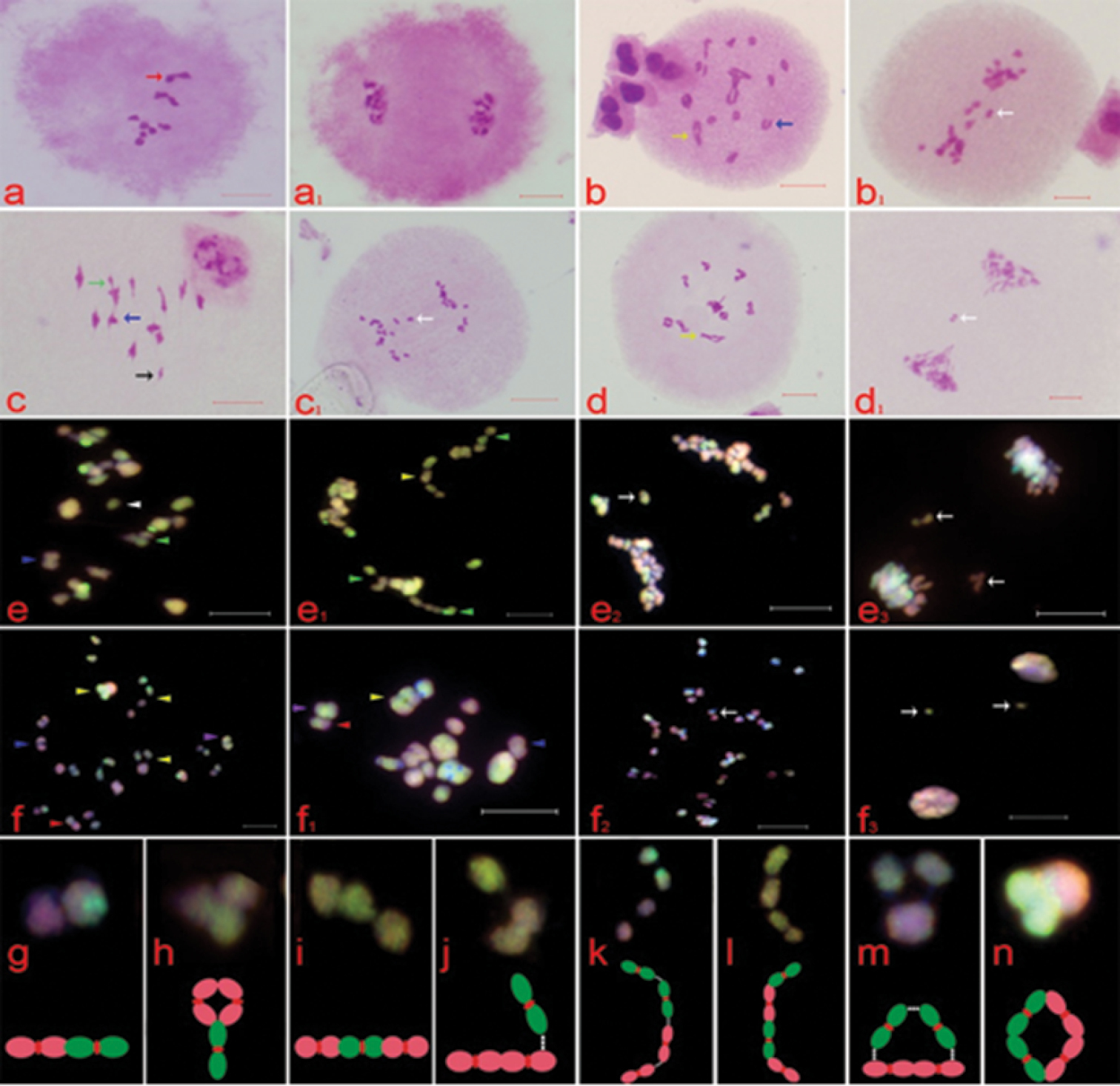
|
||
|
Chromosome pairing analysis of parents and hybrids. a, b, c, d, e (e1), f (f1) represent diakinesis of wf9, 9475, MM30, Twf9, MP30 and MP40, respectively. a1, b1, c1, d1, e2, f2 represent meiotic anaphaseIand e3, f3 represent meiotic telophaseI. Black arrow represents univalent, blue arrow represents bivalent, green arrow represents trivalent, yellow arrow represents quadrivalent, red arrow represents quadrivalent in diploid maize. White triangle represents univalent of maize genome. Z. perennis and maize autosyndetic bivalents are shown by blue and purple triangles, respectively. The allosyndetic bivalents, which were composed of one maize and one Z. perennis chromosome are represented by red triangles. The allosyndetic trivalents consisting of one maize and two Z. perennis chromosomes are represented by green triangles. Allosyndetic quadrivalents composed of two maize and two Z. perennis chromosomes are indicated by yellow triangle, while white arrow indicates lagging chromosomes g, h, i, j, k, l, m, n show different pairing types with the models below. Yellow and pink signals represent maize and Z. perennis genomes, respectively. All Bars = 10 µm. |